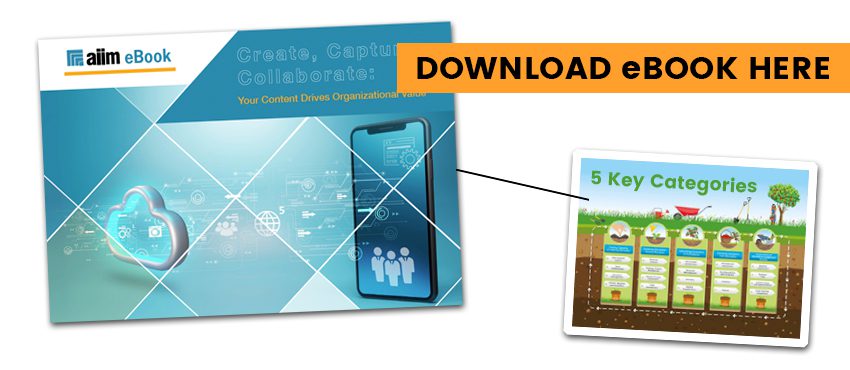It’s no secret that organizations today are swamped by information. According to AIIM, organizations expect the amount of information they must manage to increase by 4.5x in the next 18 months. Add to this the massive and immediate shift to remote working in 2020 and the impacts of information overload compound exponentially.
It’s hard to avoid information overload nowadays. And the quantity and speed of that information coming at us is often more than we can handle. The impacts are felt in every aspect of doing business today; two thirds of office workers say that the volume of data they must manage negatively affects their job.
Overload Loads Down HR Efficiency
Perhaps nowhere is information overload felt more acutely than in Human Resources. For example, when a new employee is hired the process involves a number of important documents. Tax forms, benefit enrollments, background checks, and employment contracts are common, but there are many others. Indeed, an employee file can grow to hundreds of pages. And despite the increasing digitization of business today, much of this information is on paper.
New Approaches Win the War on Paper
There are new approaches and technology that give HR some much needed relief from the war on paper. One example comes from Connecticut Governor Ned Lamont, who recently provided an update on the executive order he signed in 2019 directing state agencies to streamline their HR operations in an effort to reduce bureaucracy and implement efficiencies.
Governor Lamont stated: “From digitizing hundreds of thousands of pages of files, to eliminating backlogs, to building new teams with specialized skills, this is a modern HR effort that supports each and every one of our dedicated state employees and an environment that gets work done.”
Josh Geballe, commissioner of the Department of Administration and the state’s Chief Operating Officer further added: “This initiative is a great example of the opportunities we have in state government to improve the quality of the service we provide and use technology to help us become more cost-efficient.”
Digitization Saves Millions
At the heart of the effort is the digitization of over 100,000 paper files, totaling over 1 million pages. A study of Connecticut’s state government in advance of an expected wave of retirements next year has identified as much as $900 million in potential savings as a result.
The Future of Work Is Now
The improvements came at a good time. An added benefit has been centralizing the state’s Human Resources team during the ongoing COVID-19 pandemic. This has bolstered the ability of state agencies to work together more quickly. “Our HR team has been a critical part of the pandemic response, ensuring that agencies can quickly work together to address new challenges,” added Geballe.
Moving Forward
What can you do? Scan-Optics helped the State of Connecticut with this important initiative. We enabled the state to take data that was unstructured; then digitized, organized, and optimized the files so they were searchable and easily retrieved through their content management system. To learn more about how we help organizations globally use Intelligent Data Processing solutions to reduce the burden of paper, overcome information overload, and gain a competitive edge visit scanoptics.com or see to how it works in this video.


